Main menu
Common skin conditions

NEWS
Join DermNet PRO
Read more
Quick links
Median canaliform nail dystrophy — extra information
Median canaliform nail dystrophy
Author: William Hao Syuen Ng, Medical Student, University of Newcastle, Newcastle, Australia; Dr Arianejad Parisa Fatemeh, Dermatologist, The Dermatology and Skin Cancer Centre, Gosford, Australia. Copy edited by Gus Mitchell. February 2021.
Introduction Demographics Causes Clinical features Complications Diagnosis Differential diagnoses Treatment Outcome
What is median canaliform nail dystrophy?
Median canaliform nail dystrophy is a clinically characteristic change in the nail plate presenting as a midline longitudinal furrow or split and transverse ridges angled backwards in a fir-tree pattern.
Who gets median canaliform nail dystrophy?
Median canaliform nail dystrophy can affect all age groups, including children. Familial cases have been reported. It affects men and women equally.
What causes median canaliform nail dystrophy?
Median canaliform nail dystrophy is an acquired nail change believed to be due to microtrauma of the nail matrix, resulting in a temporary defect in keratinocyte adhesion that affects tensile strength of the nail plate.
The majority of cases appear to be sporadic or idiopathic. There have been rare reports with systemic isotretinoin use.
A similar but distinct nail dystrophy can be caused by habitual picking of the nail fold (habit-tic deformity) and there have been very rare reports of the two conditions co-existing. Some have postulated they are variants of the same disorder.
What are the clinical features of median canaliform nail dystrophy?
Median canaliform nail dystrophy most commonly involves both thumbnails, although it can be unilateral. Other fingernails and toenails can also be affected.
The longitudinal split extends from the proximal nailfold to the free edge of the nail. It is usually in the midline but may be off-centre.
The transverse ridges or splits are parallel and are angled back towards the nailfold.
Macrolunulae (larger than normal lunulae) are frequently observed in the affected nails.

Median canaliform nail dystrophy
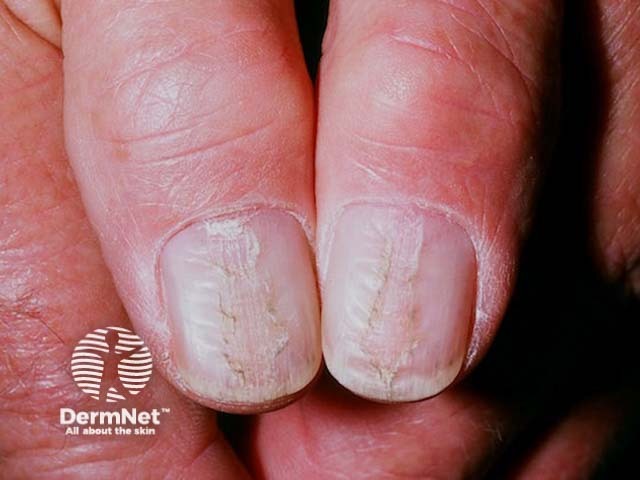
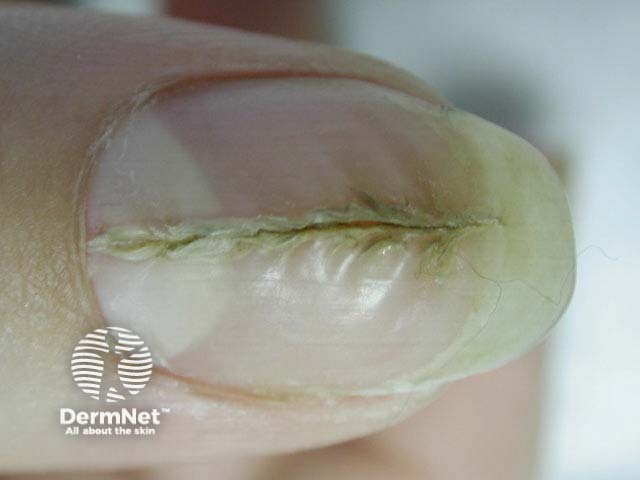
What are the complications of median canaliform nail dystrophy?
Median canaliform nail dystrophy is mainly of cosmetic concern, however the splits in the nail can catch on clothing.
How is median canaliform nail dystrophy diagnosed?
Median canaliform nail dystrophy is a clinical diagnosis.
Investigations may be required if there are clinical signs to suggest an underlying tumour.
What is the differential diagnosis for median canaliform nail dystrophy?
- Habit-tic deformity — the parallel ridges are transverse rather than the fir-tree pattern
- Subungual tumours, including glomus tumour and digital myxoid pseudocyst
- Dermatoses including lichen planus, Darier disease, and nail psoriasis.
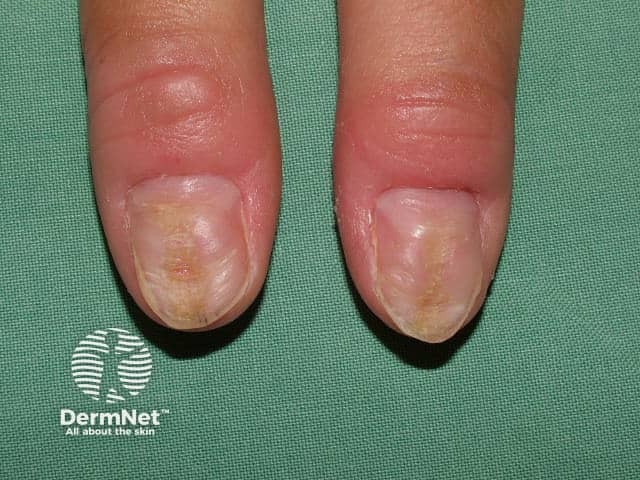
Habit-tic deformity in thumbnails
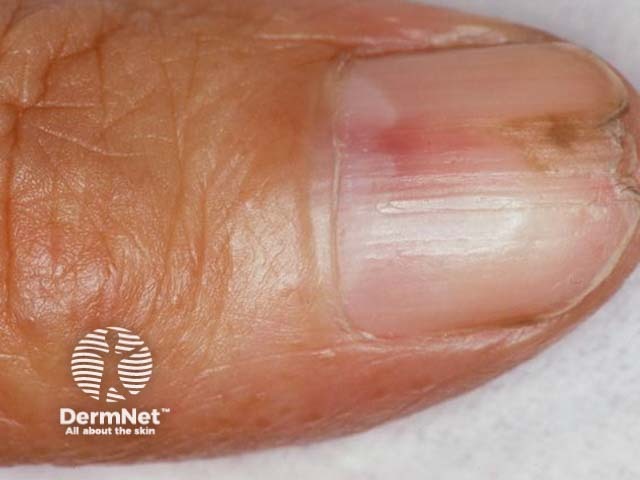
Glomus tumour
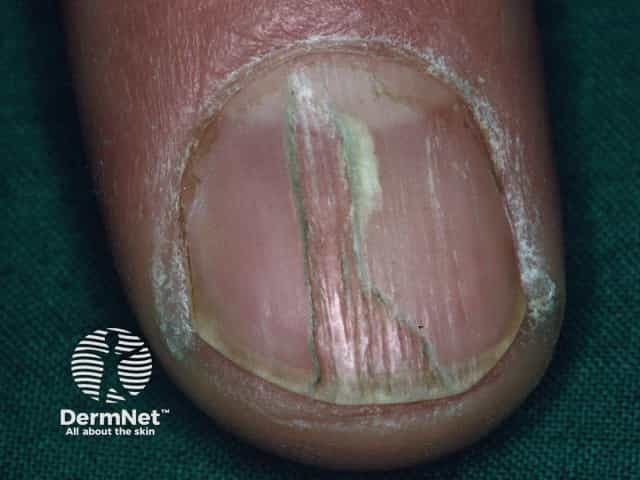
Nail dystrophy due to lichen planus
What is the treatment for median canaliform nail dystrophy?
Median canaliform nail dystrophy may not always require active treatment.
General measures
- Bandaging of the affected nail to prevent catching or trauma to the nail
- Stopping an implicated medication, such as isotretinoin
- Managing underlying mental health issues if associated.
Specific measures
No specific treatment has been found to be effective for median canaliform nail dystrophy. Treatments have included:
- Topical steroid
- Topical tacrolimus
- Phototherapy.
What is the outcome for median canaliform nail dystrophy?
Median canaliform nail dystrophy often grows out spontaneously over months or years. Recurrence can occur.
Bibliography
- Hoy NY, Leung AK, Metelitsa AI, Adams S. New concepts in median nail dystrophy, onychomycosis, and hand, foot, and mouth disease nail pathology. ISRN Dermatol. 2012;2012:680163. doi:10.5402/2012/680163. Journal
- Kota R, Pilani A, Nair PA. Median nail dystrophy involving the thumb nail. Indian J Dermatol. 2016;61(1):120. doi:10.4103/0019-5154.174092. PubMed Central
- Mooney E, Mahar P, Howard A. Median canaliform and habit-tic deformity of the nail: is there an association with macrolunulae?. Australas J Dermatol. 2016;57(4):319–20. doi:10.1111/ajd.12377. PubMed
- Pathania V. Median canaliform dystrophy of Heller occurring on thumb and great toe nails. Med J Armed Forces India. 2016;72(2):178–9. doi:10.1016/j.mjafi.2015.06.020. PubMed Central
- Wang C, Lee S, Howard A, Foley P. Coexisting median canaliform nail dystrophy and habit-tic deformity in a patient with atopic dermatitis. Australas J Dermatol. 2020;61(1):e100–1. doi:10.1111/ajd.13084. PubMed
On DermNet
